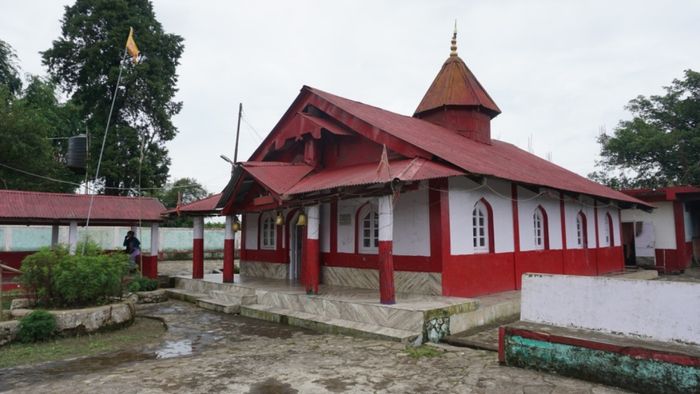Meghalaya’s 600-year-old Nartiang Temple draws thousands on Vijaya Dashami
The 600-year-old Durga temple at Nartiang in Meghalaya’s West Jaintia Hills district witnessed a massive gathering of devotees on October 2 as thousands thronged the sacred shrine on the occasion of Vijaya Dashami, the final day of Durga Puja.

- Oct 03, 2025,
- Updated Oct 03, 2025, 8:04 AM IST
The 600-year-old Durga temple at Nartiang in Meghalaya’s West Jaintia Hills district witnessed a massive gathering of devotees on October 2 as thousands thronged the sacred shrine on the occasion of Vijaya Dashami, the final day of Durga Puja.
The temple, revered as one of the 51 Shakti Peethas, holds a unique place in India’s spiritual landscape for its seamless fusion of Hindu traditions with Khasi–Jaintia cultural practices.
“What makes Nartiang special is the organic integration of tribal customs with classical Hindu ritualism, a legacy preserved for centuries,” said a priest from the Deshmukh lineage of Maharashtra, which has been serving the temple for generations. “The form may differ, but the devotion remains the same.”
Unlike most temples across the country, the Goddess here is represented by a banana plantain trunk, in line with Khasi customs that forbid sculpted deity images. Adorned with marigolds and symbolic decorations, the plantain trunk stood as the living embodiment of the Goddess throughout the festival.
Also Read: Meghalaya resolves Sohra land dispute, approves new rules, launches e-Cabinet for paperless governance
The local chieftain, or Dalloi, serves as the temple’s chief patron, highlighting the intertwining of spiritual devotion with the region’s indigenous governance systems. On the concluding day, the Dalloi and his entourage performed a traditional dance before ceremonially removing the plantain trunk from the sanctum and immersing it in a nearby river, symbolising the departure of the Goddess.
Devotees from across Meghalaya and beyond joined the celebrations, their chants and drumbeats reverberating through the temple complex. Traditional hymns, still recited in a language no longer understood, added a layer of mystery to the age-old rituals.
Dr. H.H. Mohrmen, a scholar of Khasi-Pnar traditions, described the practice as a remarkable example of cultural continuity. “Though the words are no longer intelligible, the community holds on to them faithfully, making the rituals at Nartiang both unique and profound,” he said.
For the thousands who gathered, the celebration was not just a festival but a reaffirmation of a living heritage that binds faith, culture, and identity across centuries.